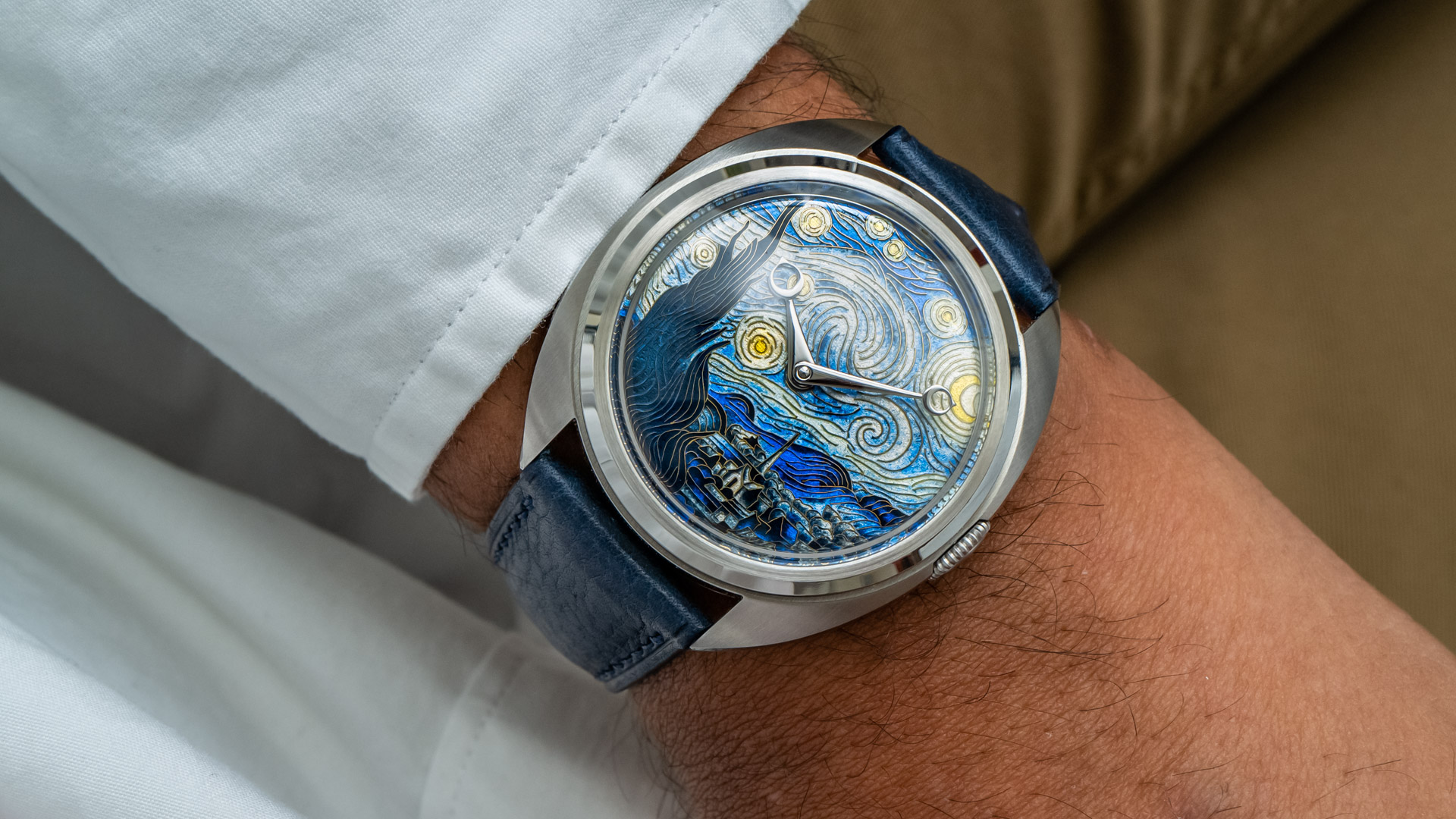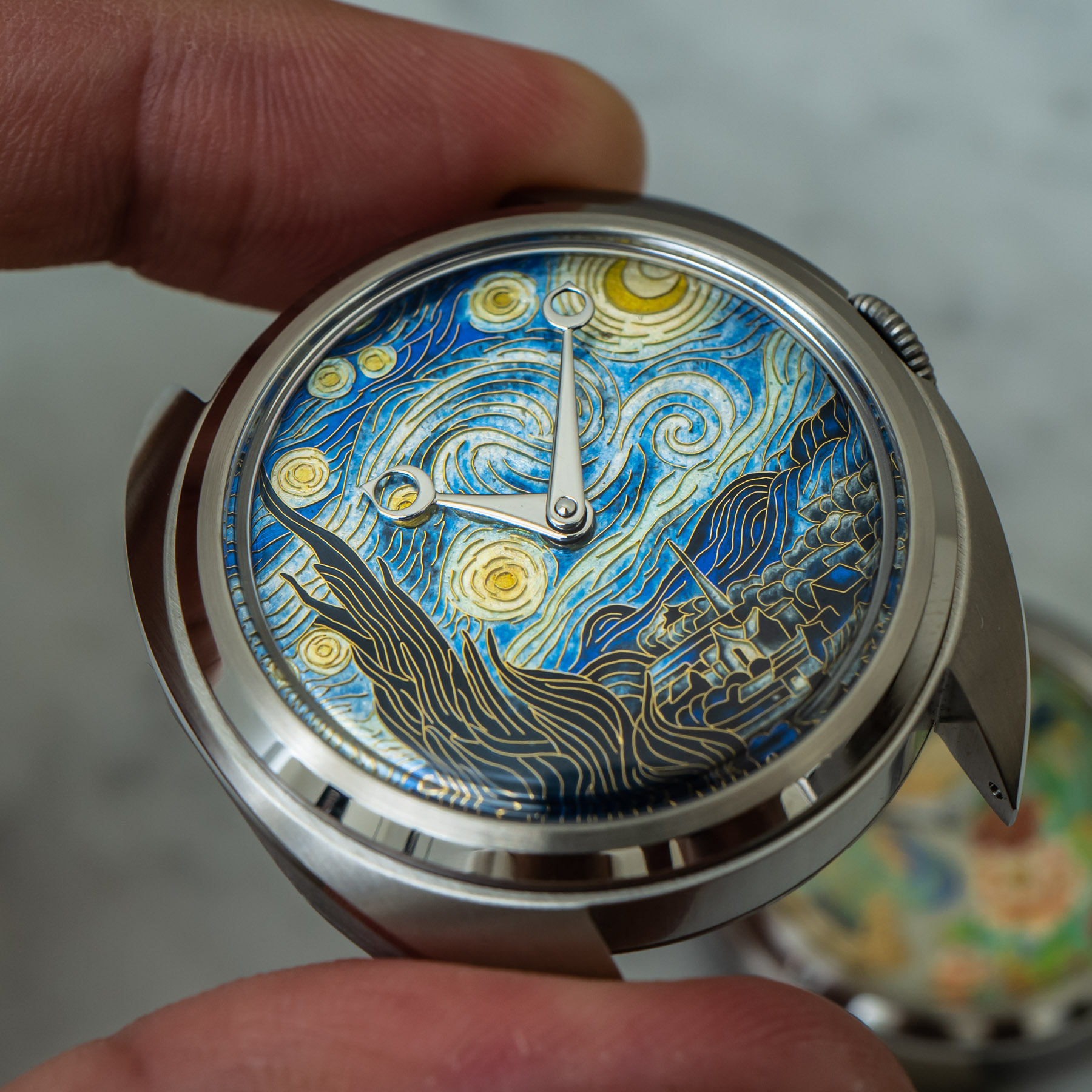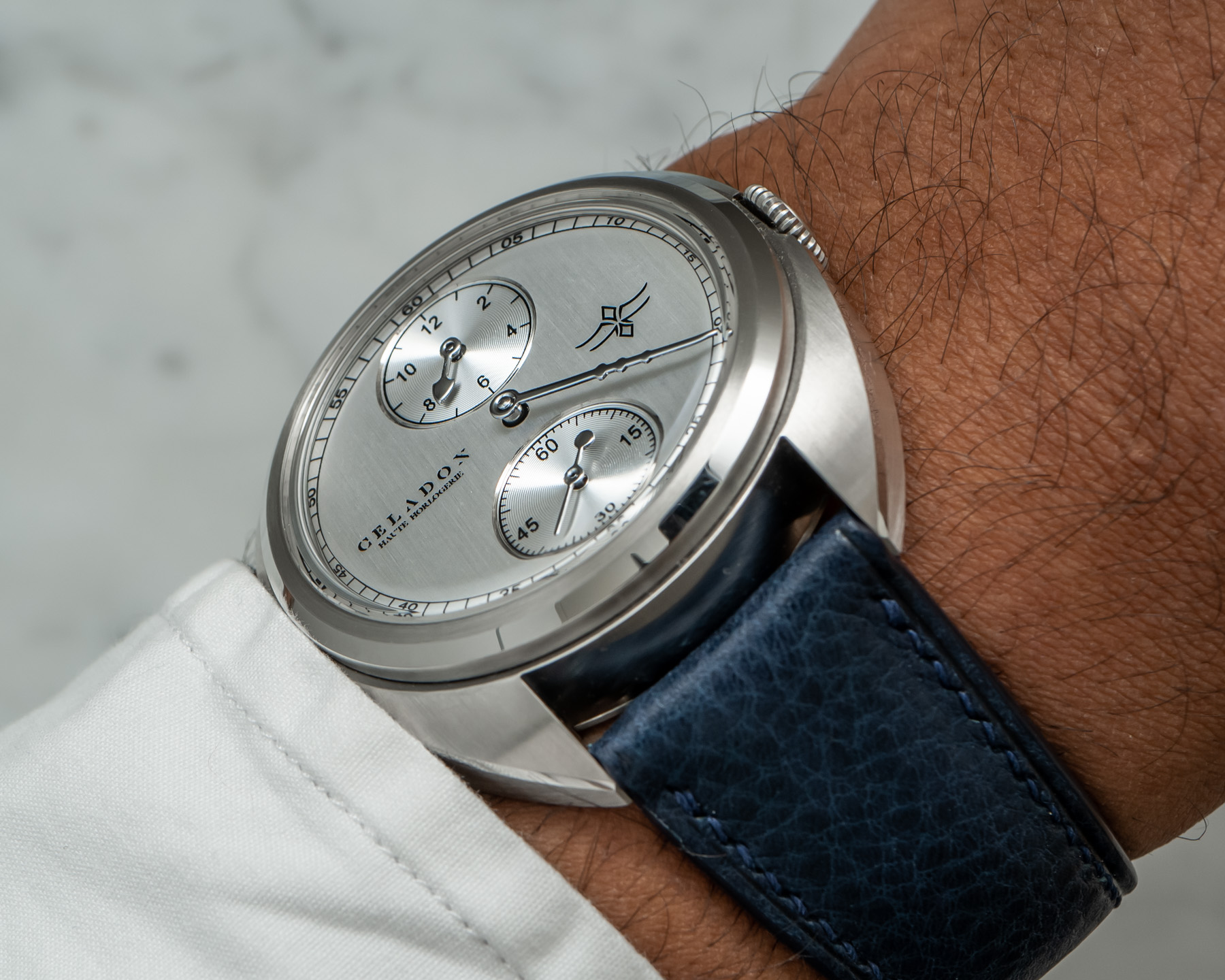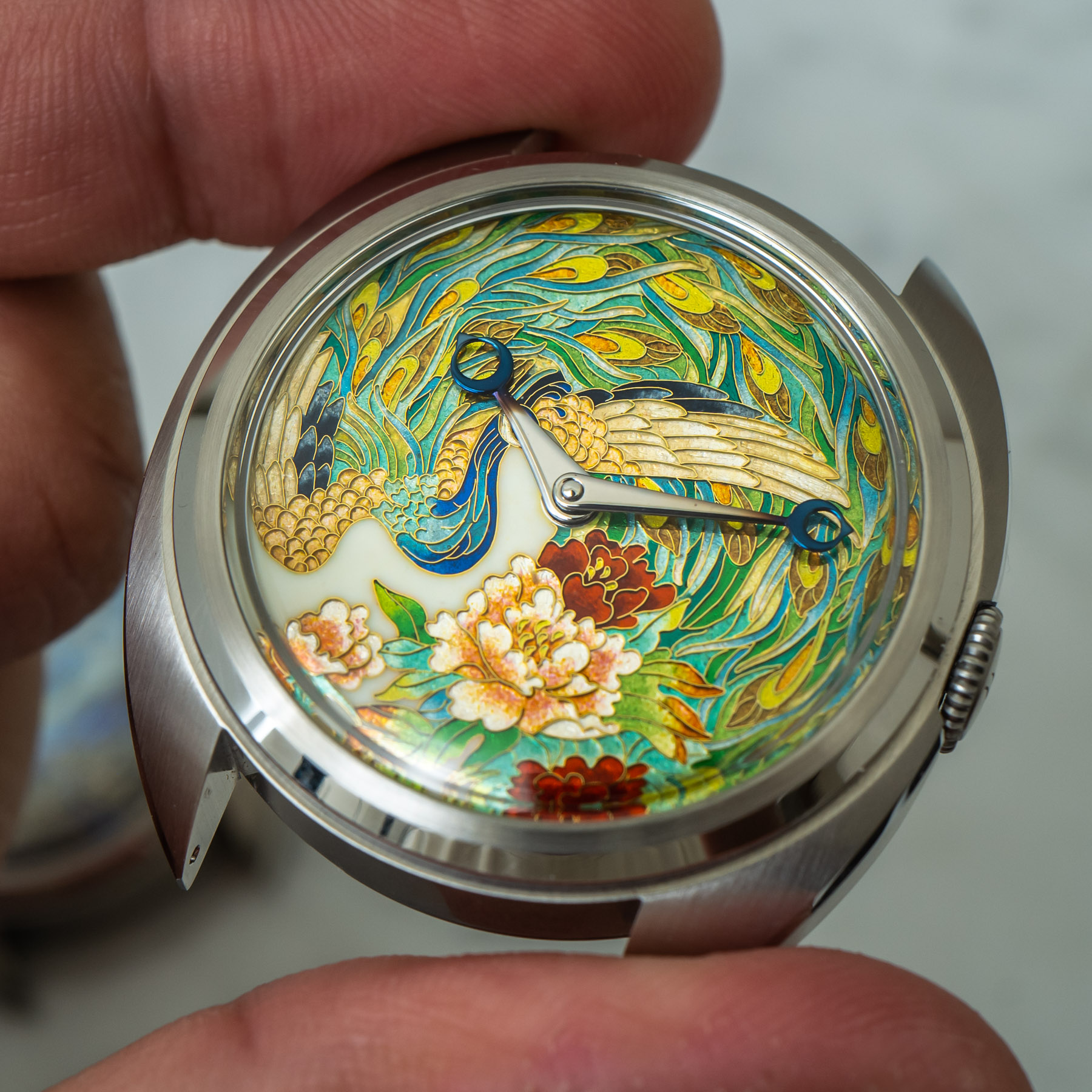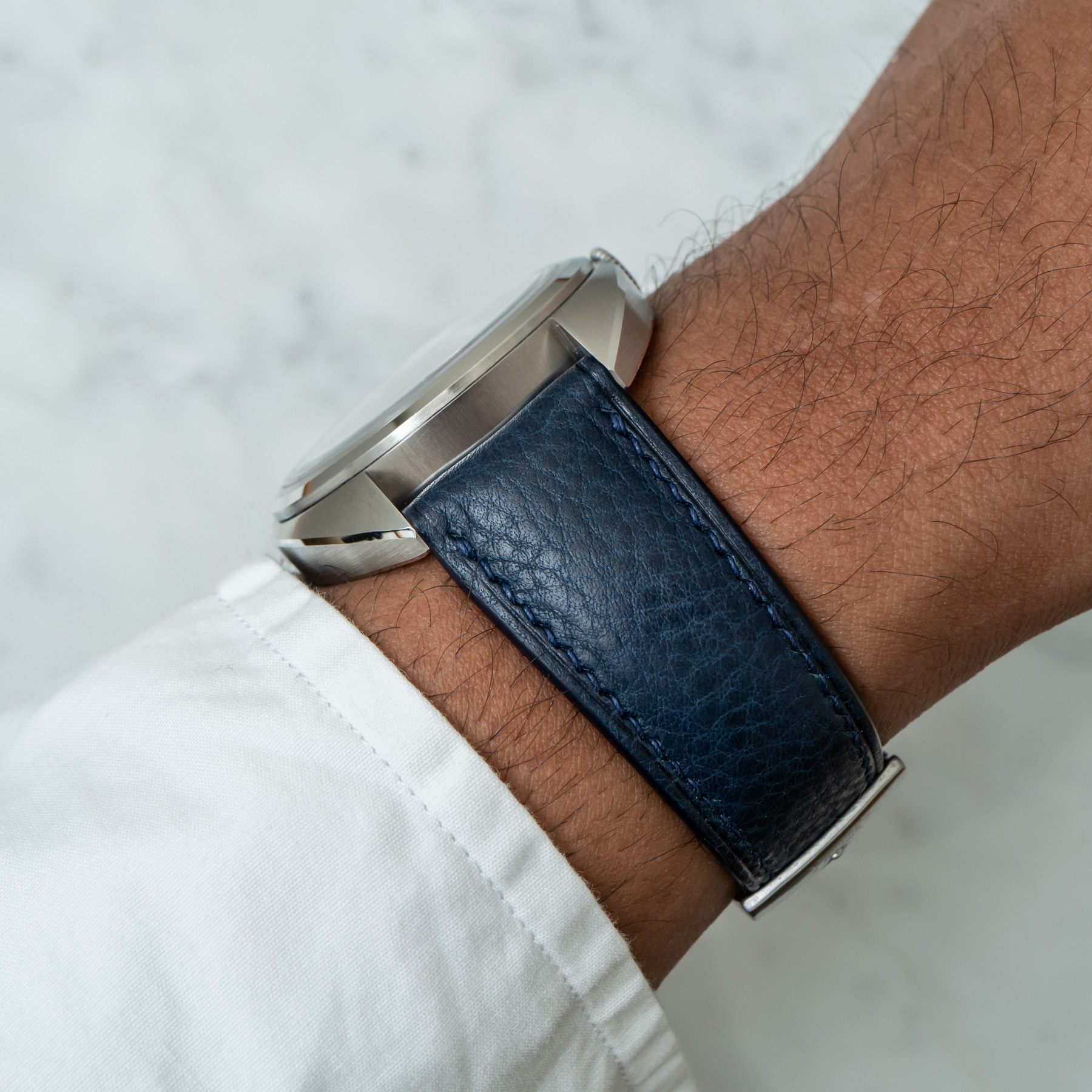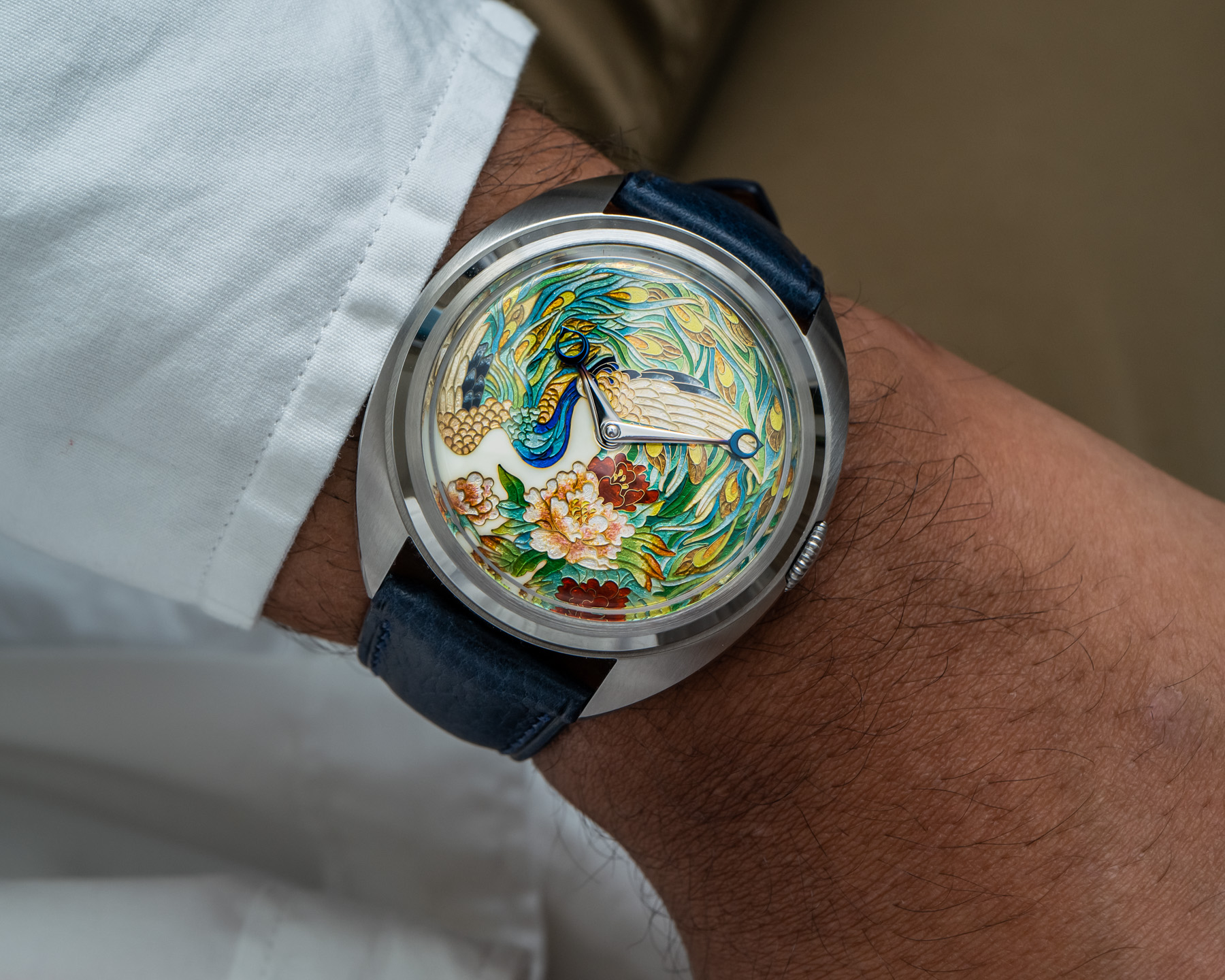
Celadon Haute Horlogerie is a small brand founded by Benjamin Chee that wears its mission statement like a badge of honor, declaring “Made in China with Pride.” Understandably, I am sure many of you don’t immediately think “haute horlogerie” when you read those words, but give Celadon HH the opportunity, and I think the brand could make a giant dent in an old stereotype. By sourcing a cloisonné enamel dial maker who comes from generations of master artisans and an AHCI watchmaker, Chee has launched the Celadon HH Century watch collection. It may not be your cup of tea, but these Chinese watches can compete with some of the best names out of Switzerland, Germany, and Japan.
The Celadon Century collection seen here consists of two pieces done in cloisonné enamel and a third with a regulator configuration. The instantly recognizable “Starry Night” Van Gogh motif and the equally impressive “Peacock and Peonies” cloisonné enamel pieces immediately point toward Chee’s desire to not be limited solely due to being “made in China with pride.” I think it takes chutzpah to choose one of the most famous works of art in human history as the basis for a cloisonné enamel, but there you have it. (The Celadon Century Cloisonné “Starry Night” was a 2021 GPHG candidate in the “Petite Aiguille” category.)
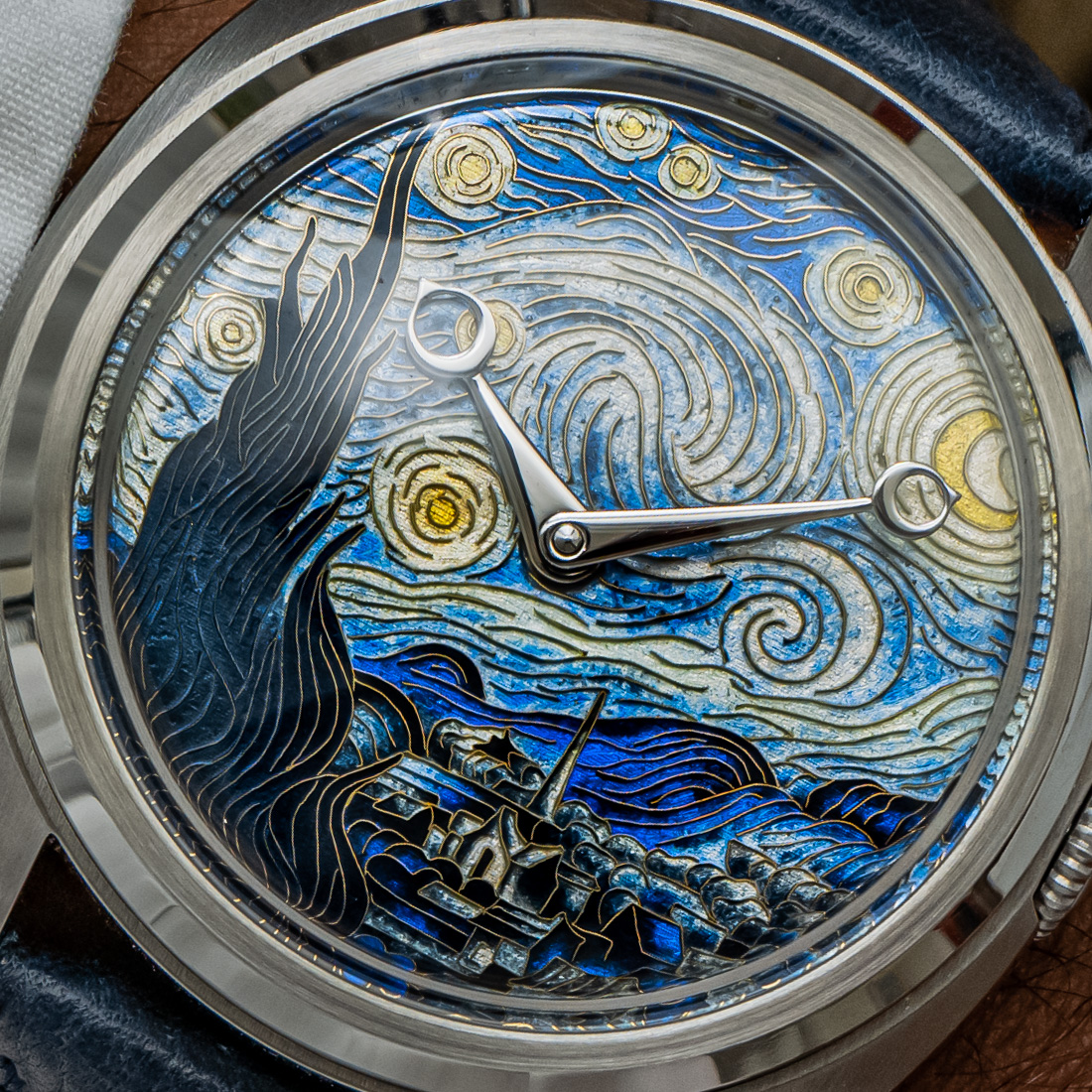
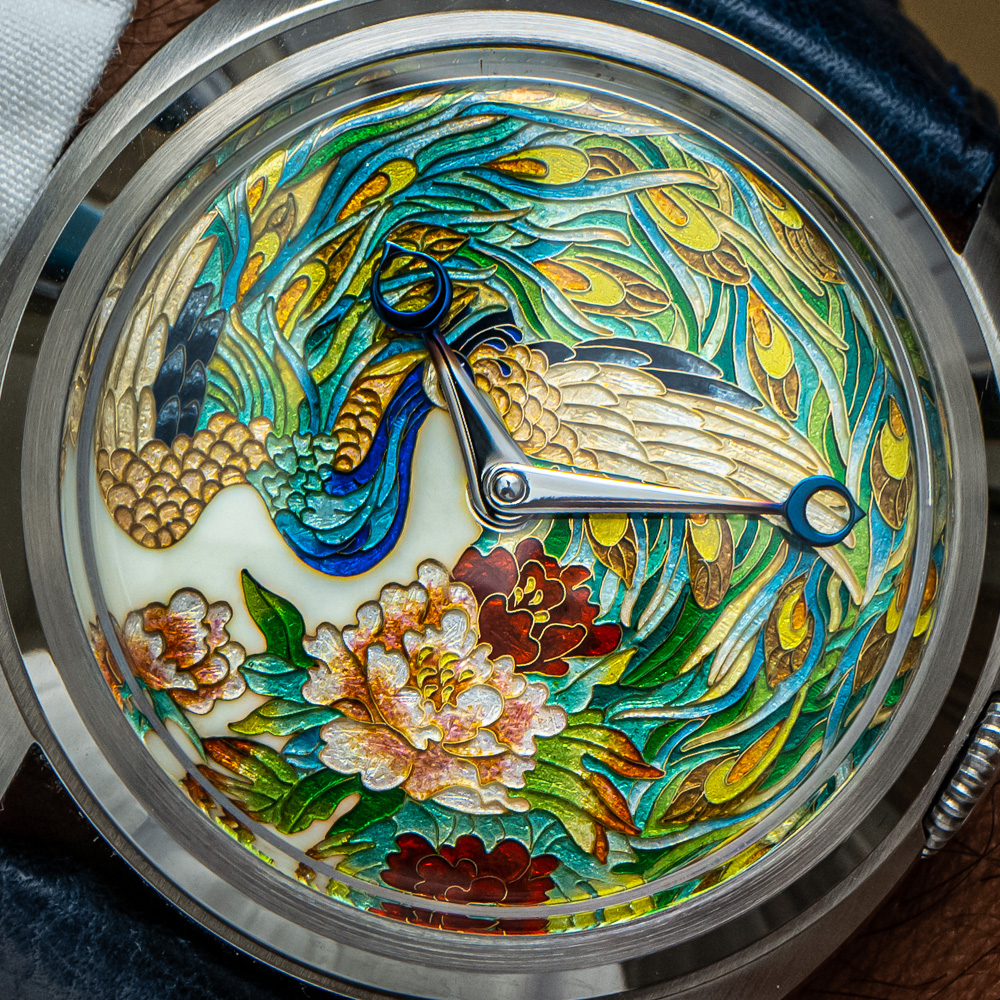
I wasn’t surprised to learn that rather than outsourcing the task, Chee instead hired one of the best— if not the only — cloisonné enamel artisans in China. Grandmaster Xiong Songtao is a third-generation enamel artisan whose ancestors worked on items like the vases and pots seen in the Forbidden City from the Qing Dynasty. His first cloisonné enamel dial sold for 800,000 yuan (approx. $125,000 USD) in 2012, and he allegedly went on to make enamel dials for major Swiss and German brands, albeit uncredited due to their agreement.
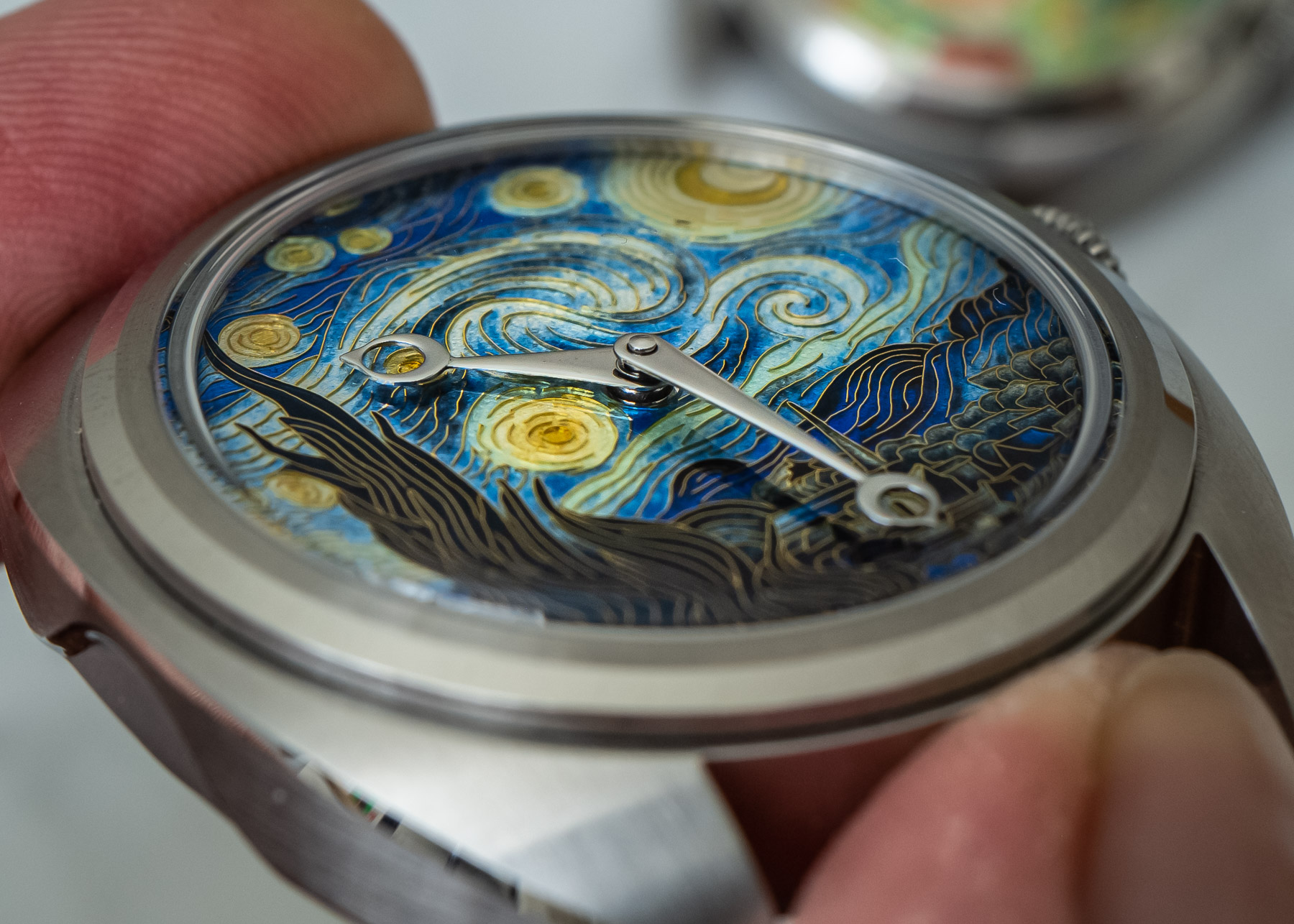
In order to create a cloisonné enamel dial, Songtao applies gold wires (measuring just .04-.07mm thick) that need to be perfectly set on the solid silver base of the dial in order to create the desired image. This process alone takes about 50 hours, after which the enamel is applied and then fired 25 times in a 900-degree oven. According to Chee, there is about a 10% success rate for each enamel dial, but the result is a work of art that will never fade with time.
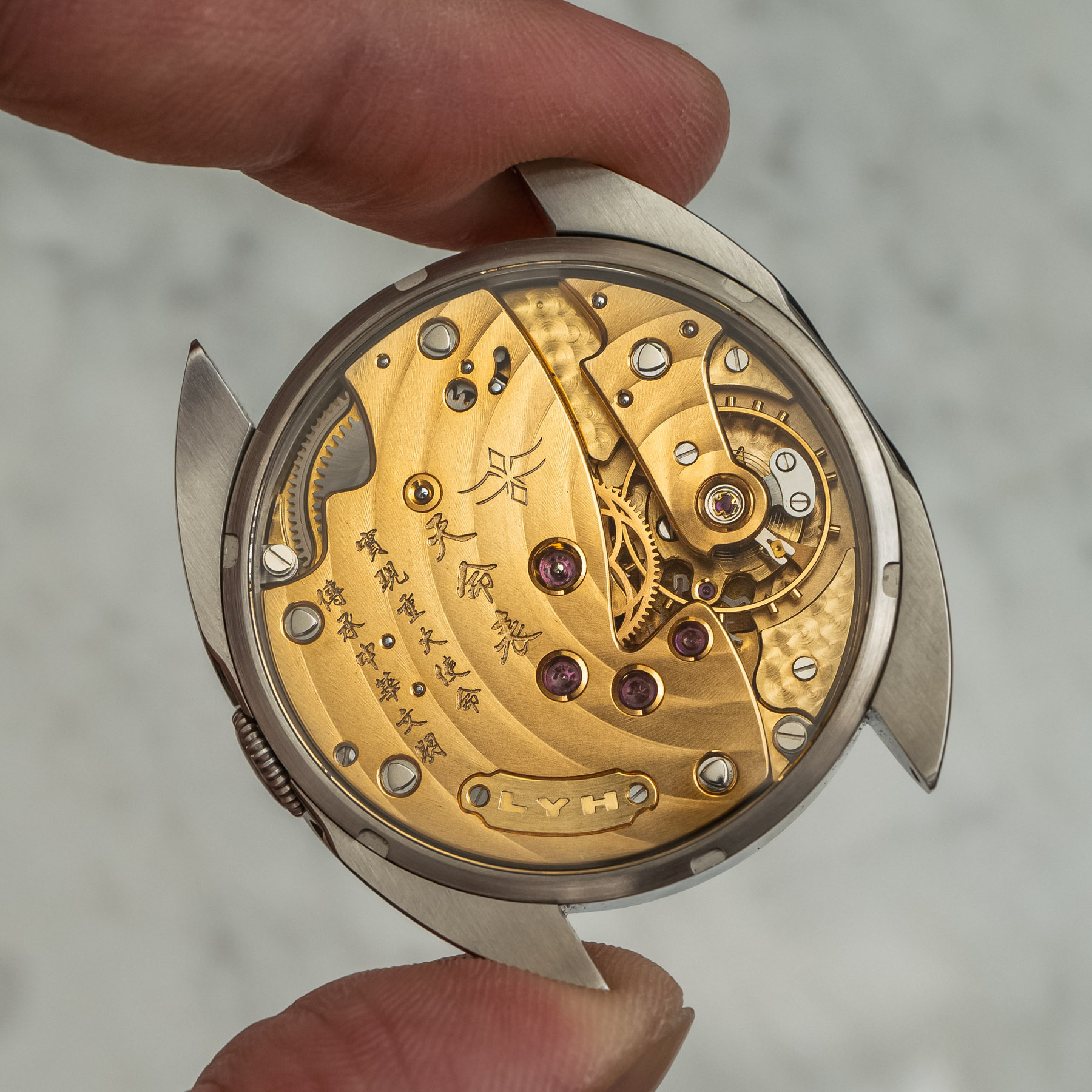
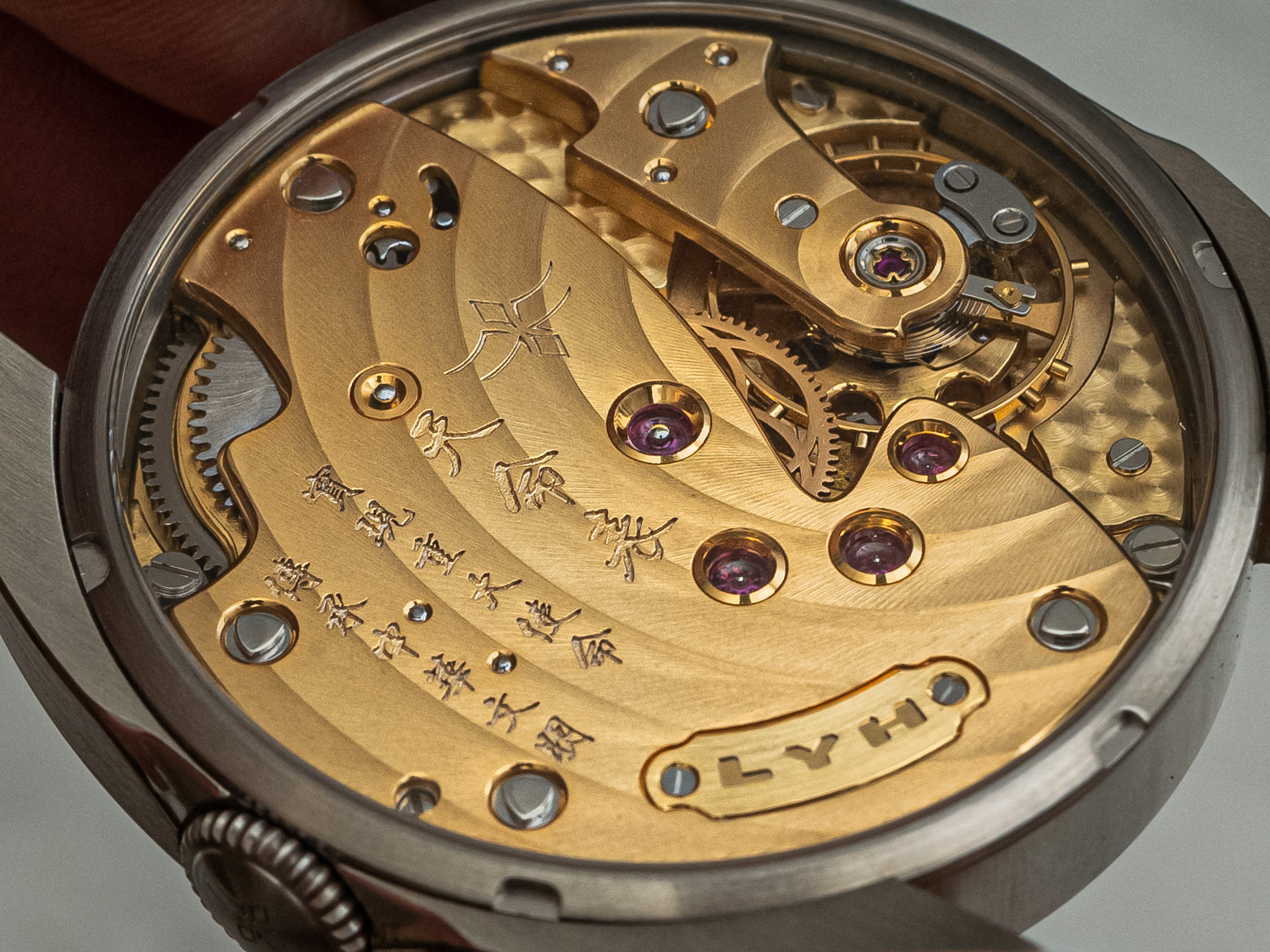
The movement for the Celadon Century was created by Lin Yong Hua, a Shenzhen-based watchmaker who is a member of the AHCI and on par with some of the finest that Switzerland has to offer. I encourage everyone to read about Lin in this New York Times profile and get a better look at his playfully quirky watches in this article by our friends at SJX.
Lin designed the manual-wind movement from the ground up with an intention for it to serve as a base caliber for future complications. Done in a three-quarter bridge, the movement is immediately characterized by the distinctly muted rose-gold plating, as well as its use of sweeping curves. The rubied chatons, perlage, beveling, and Chinese calligraphy are all done by hand. Rather than the standard Geneva stripes, the bridges are finished in a “Circular Chinese Scroll Stripe” that do appear to have a subtle arc to them. Hidden beneath the mainplate are barrel wheels done with a sunburst finish and a center star wheel bearing a tiny LYH signature. You’ll notice the larger LYH plate which is Lin Yong Hua’s stamp on this new Chinese caliber. Manually wound, this movement operates at 18,000 vph and has a 45-hour power reserve.
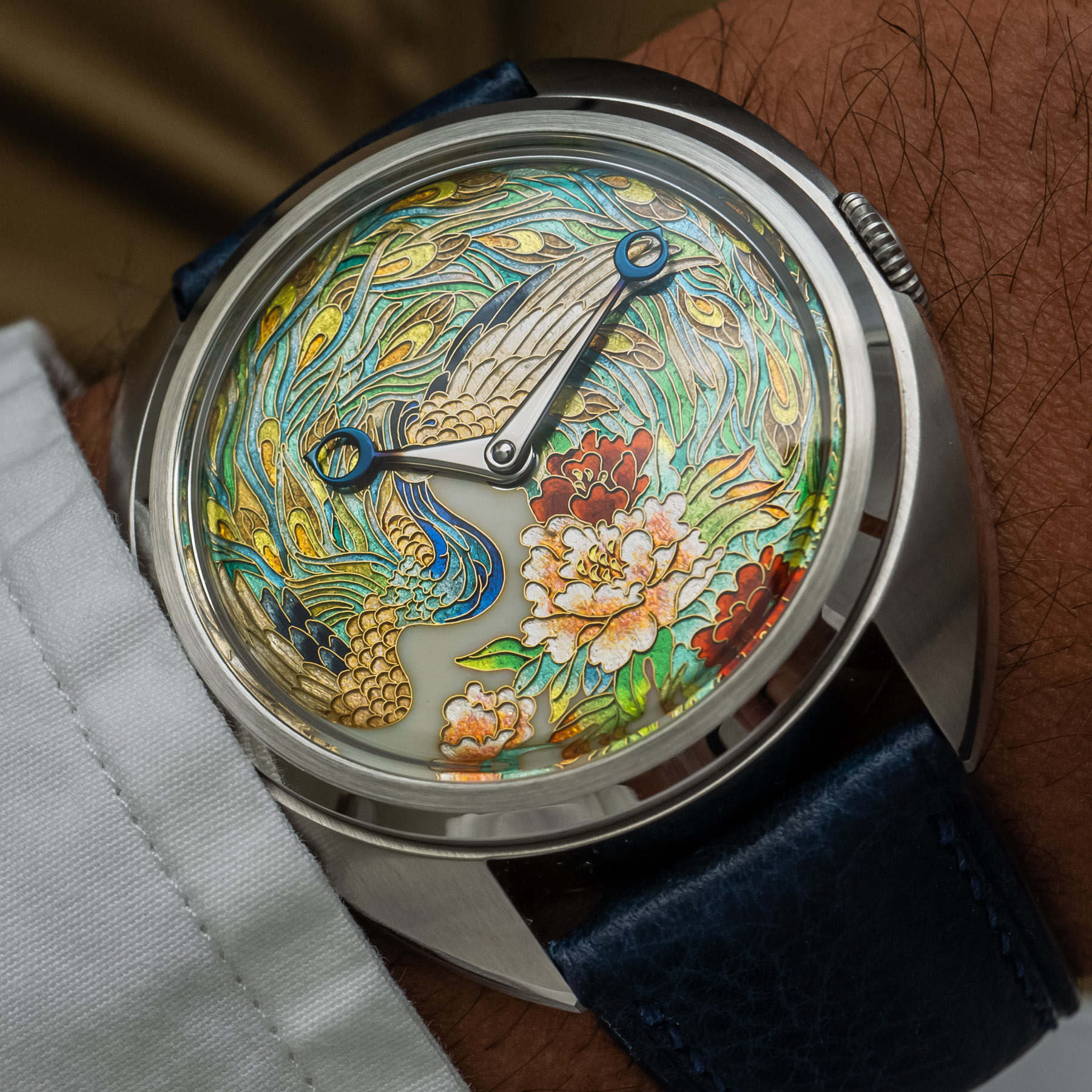
The hour and minutes hands are handmade by Lin, as well. Inspired by a peacock tail feather, the rounded hands are also available in a “transition blue” as you see on “Peacock and Peonies.” This isn’t something you really see done and is an excellent option to give buyers.
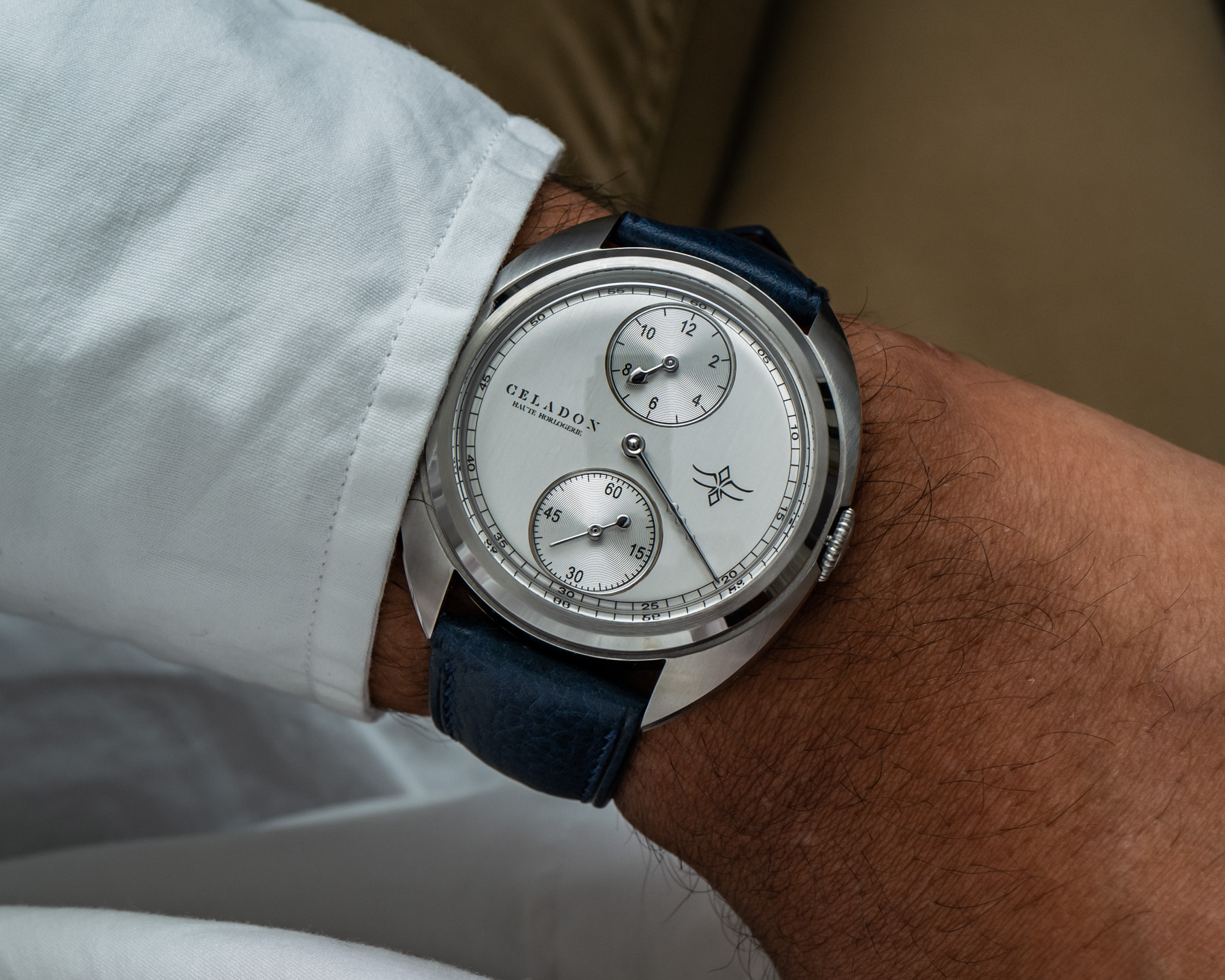
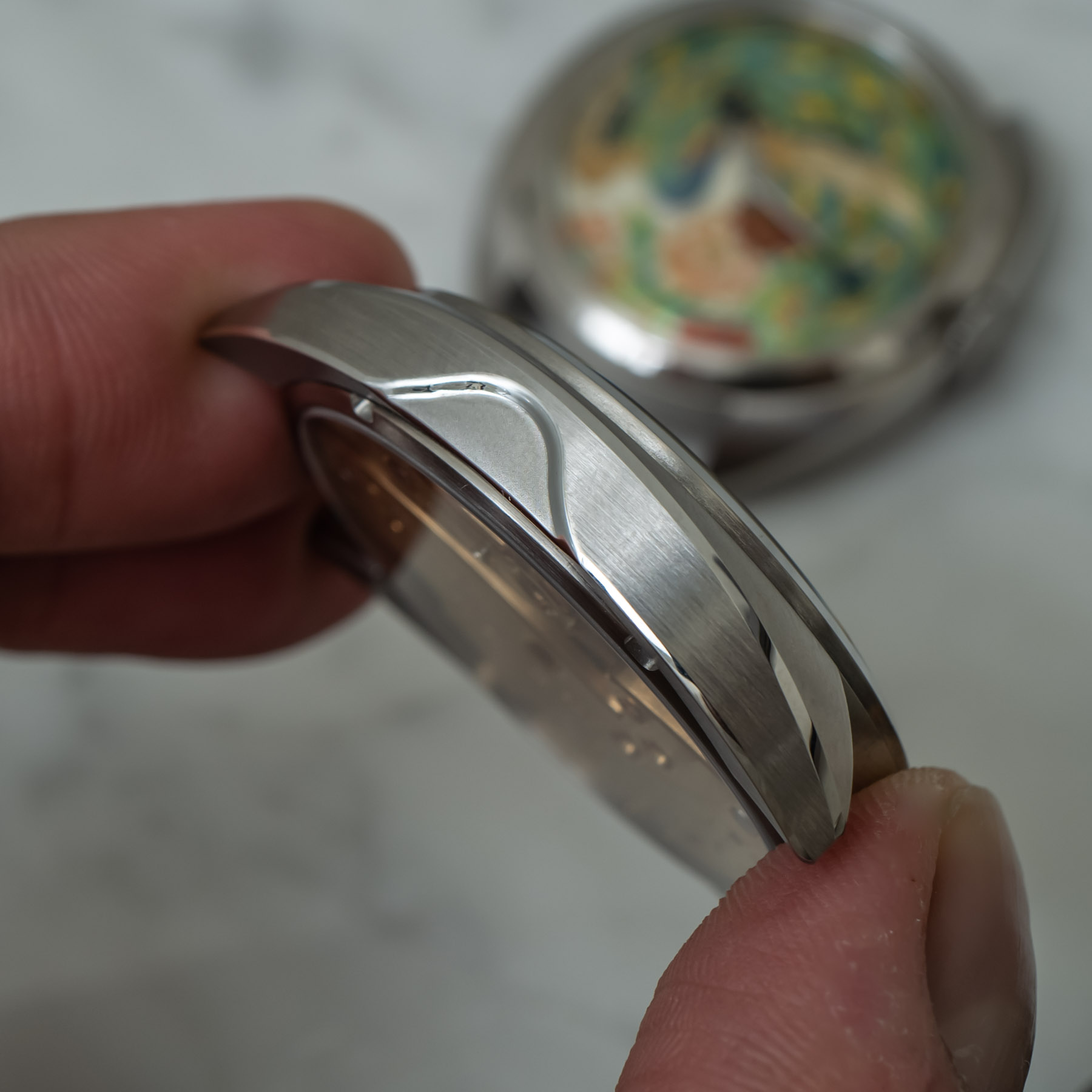
Now that we’ve discussed the dial and movement, let’s take a look at the “moon-shaped” case of the Celadon Century. Indeed, it is wonderfully rounded with a perfectly flat crown that seems to fit in snug with the rest of the case. Operating it is no more difficult or complicated than any typical crown, by the way. The case measures 42mm-wide and 11.5mm-thick with a lug-to-lug height of 47.5mm.
According to Chee, the left side of the case is designed to evoke classical Chinese arch bridges and the right side (with crown) is inspired by the Chinese “moon gate.” These architectural inspirations are specifically tied to the Jiangnan region, which comprises both Suzhou and Hangzhou. All poetic and historic references aside, the alternating brushed and polished finishing is nicely done and the downward slope of the lugs deserves praise, as well.


The Celadon Century Regulator model shares the same basic case and movement as the enamel versions but with a more casual dial (I suppose it’s not too difficult to be more casual than cloisonné enamel) with the classic regulator layout with a large central minutes hand, hour subdial at 12 o’clock, and seconds subdial at 6 o’clock. While it’s easy to be outshined by the other two, I do want to praise the hands on the regulator. The minutes hand has three protruding curves that are truly unusual in the best possible way. The hour hand has a nice, large arrowed tip that inherently lends importance to itself, almost in spite of its subdial placement.
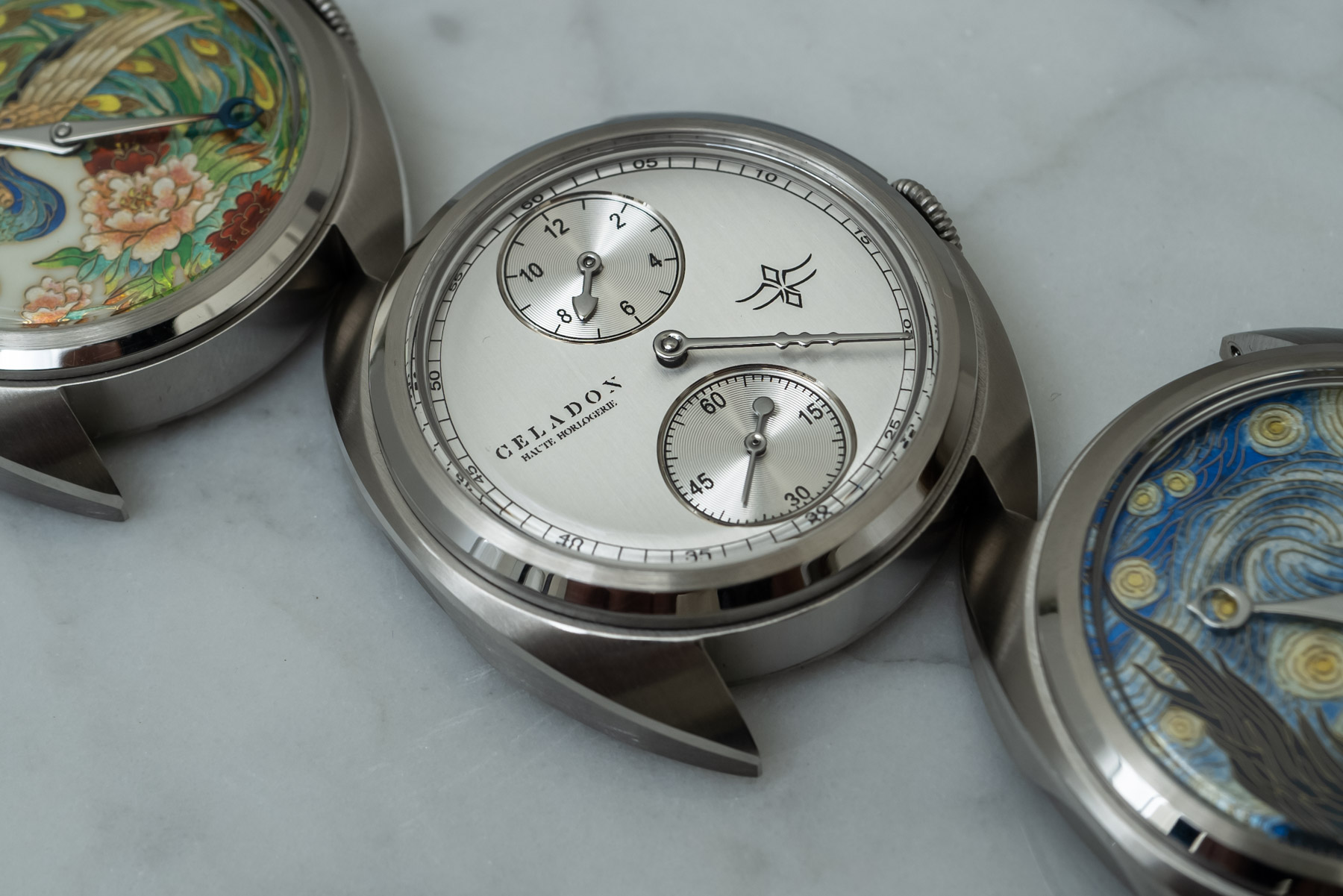
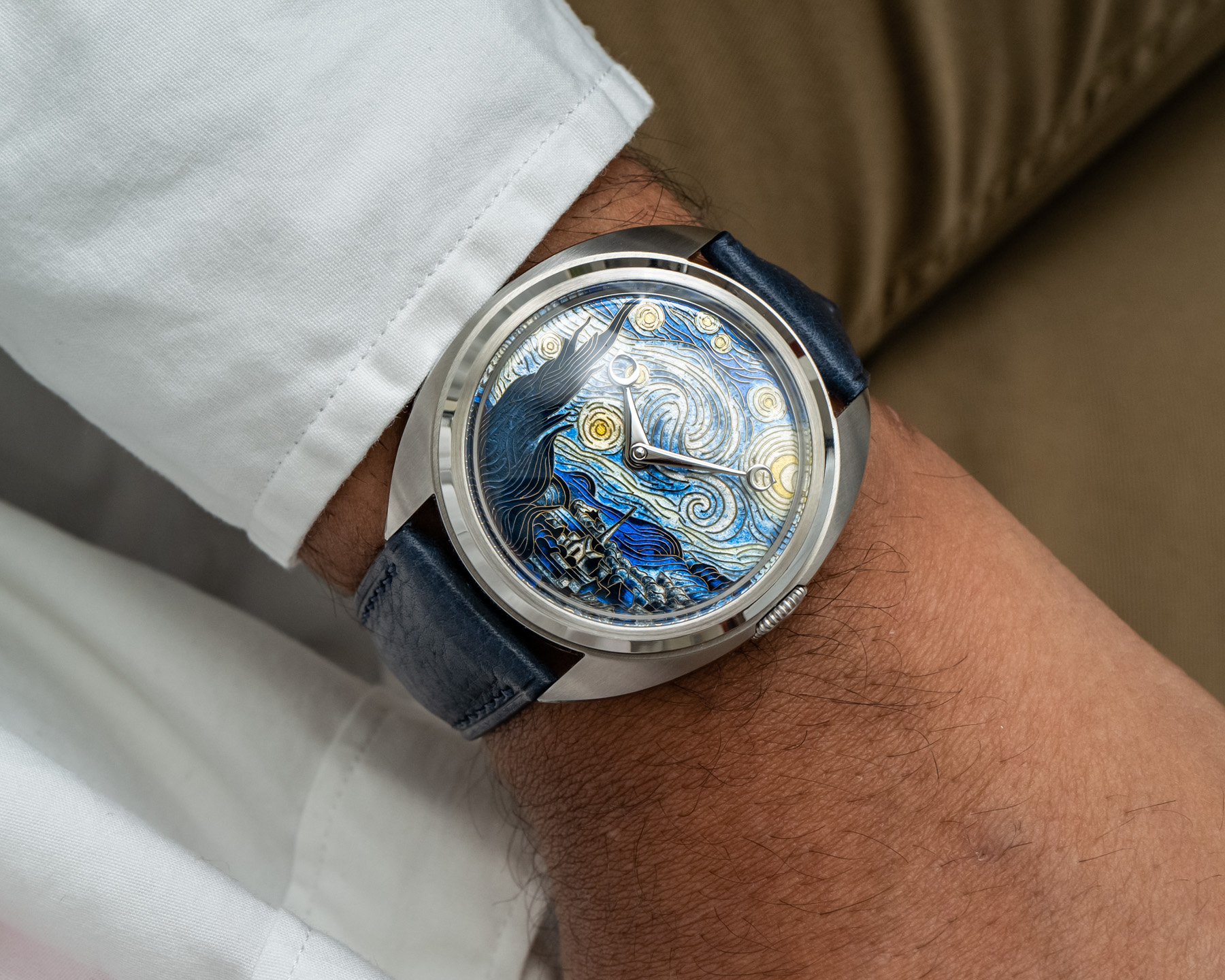
The Celadon HH Century offers some customization options like a Breguet overcoil on the movement, the transition blued or fully blued hands, as well as some other bespoke customized dial options. I believe there is a six-month to one-year waitlist for both the Century Cloisonné pieces as well as the Century Regulator, but the best bet would be to directly reach out to the brand. These watches are certainly not cheap, but I think they are worth every dollar, especially the cloisonné enamel dials. Celadon HH Century Regulator is priced at $10,900 and the Century Cloisonné is pried at $12,900. You can learn more at celadonhh.com.

